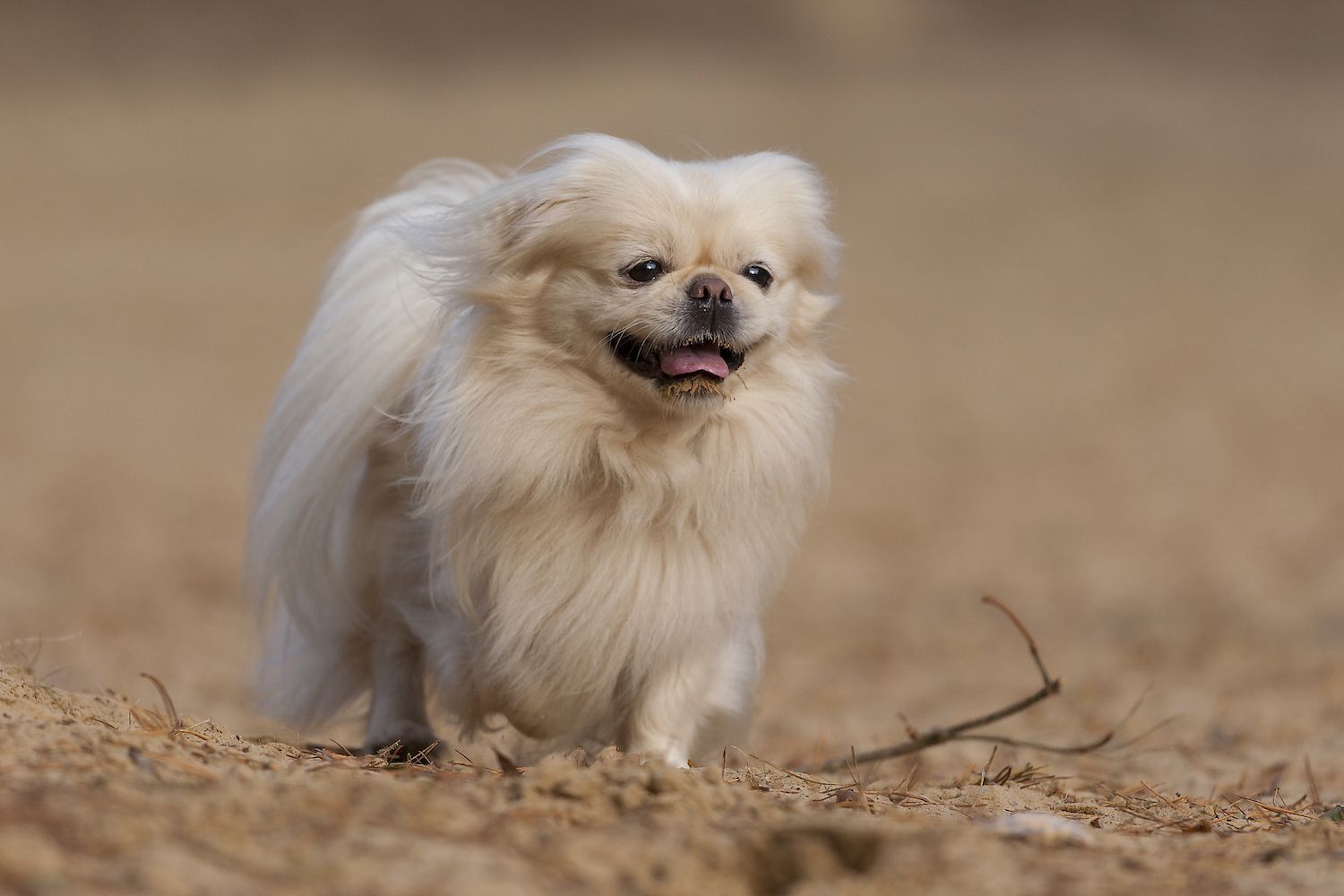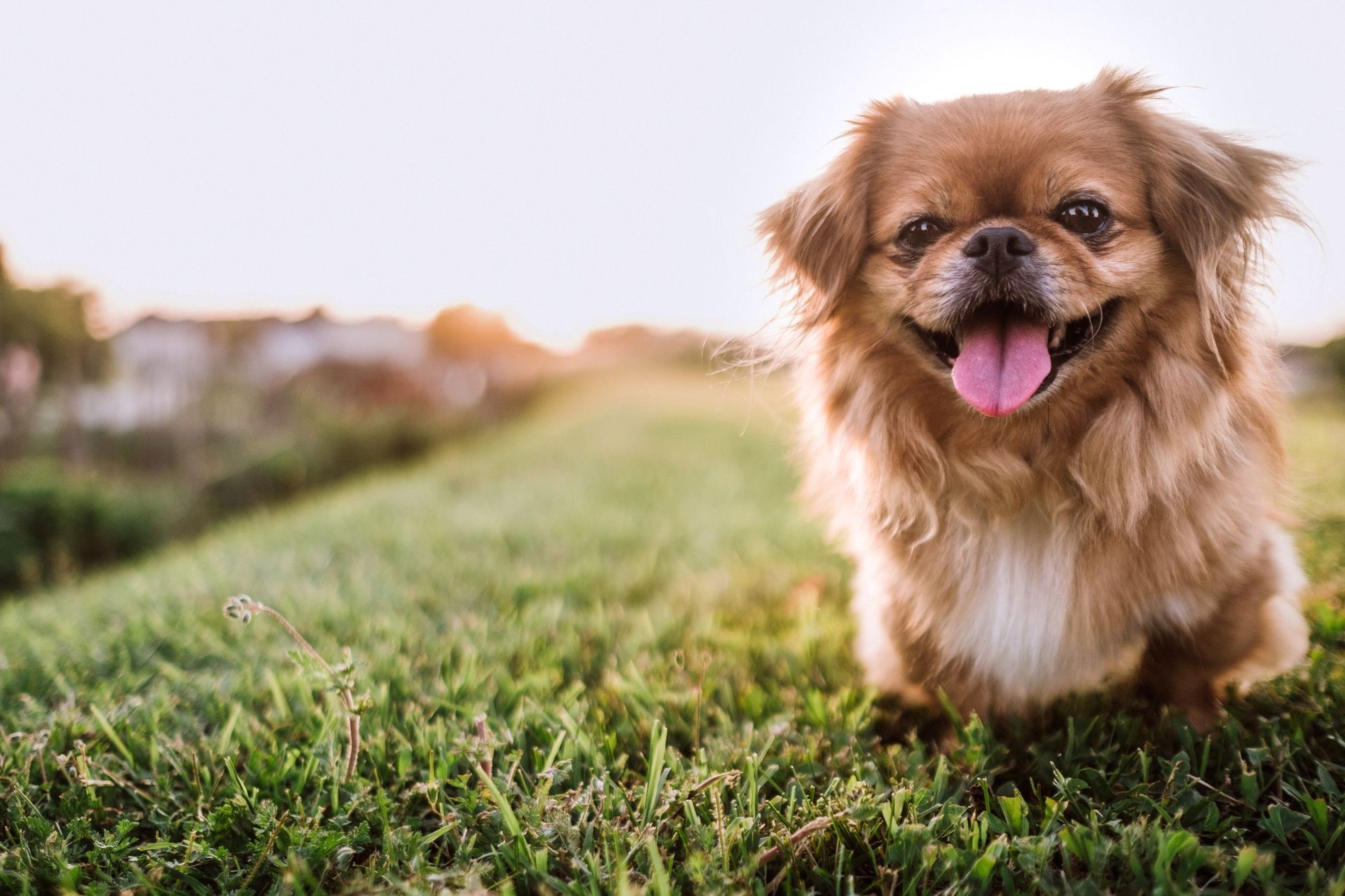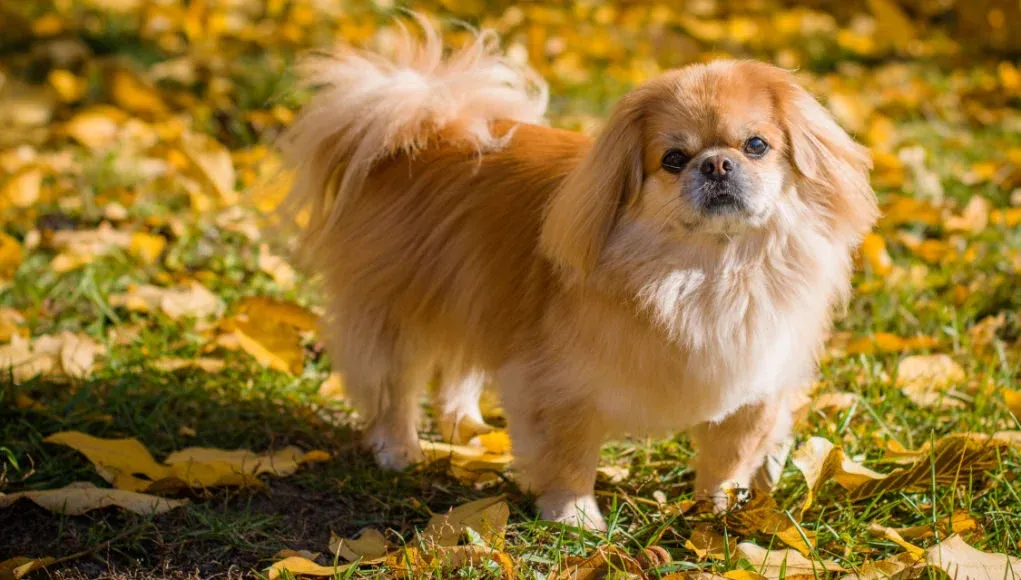The Pekingese is a charming and distinctive dog breed with a rich history and unique characteristics. Understanding the history, physical characteristics, personality, training and exercise needs, as well as proper care for a Pekingese, can help potential owners make an informed decision about welcoming this breed into their homes.
By familiarizing yourself with the history, characteristics, and needs of the Pekingese, you can provide them with a loving and fulfilling life as a cherished companion.

Key takeaways:
- The Pekingese dog breed has ancient Chinese origins and is associated with Chinese royalty.
- Pekingese dogs have distinctive physical characteristics, such as their small size, unique facial features, and various coat colors.
- Pekingese dogs are known for their loyal and affectionate nature, as well as their independent and regal temperament.
- Training a Pekingese can be challenging, and they have specific exercise and mental stimulation needs.
- Caring for a Pekingese includes regular grooming, addressing health concerns, and providing a proper diet and nutrition.
- Pekingese dogs can make great family pets and have the potential to get along with other pets, depending on their individual personalities.
- When living with a Pekingese, it is important to consider their living arrangements and provide a suitable environment for their needs.

History and Origins of the Pekingese
The fascinating history and origins of the Pekingese breed take us back to ancient China, where this adorable companion became a beloved favorite among Chinese royalty.
Ancient Chinese Origins
The Pekingese dog breed has an ancient Chinese origin, dating back hundreds of years. These adorable dogs were highly valued by Chinese royalty and were even regarded as sacred.
During ancient times in China, the Pekingese were believed to possess a lion-like appearance, which symbolized strength and courage. They were often kept in palaces and served as loyal companions to the imperial family.
The Pekingese breed is said to have originated from other small breeds in China, including the Shih Tzu and the Lhasa Apso. These dogs were selectively bred to embody specific traits, such as their distinctive facial features and luxurious double coat.
Understanding the ancient Chinese origins of the Pekingese can provide insight into their unique personality and appearance. Today, these dogs continue to captivate people with their rich history and captivating charm!
Physical Characteristics of the Pekingese
With their unique physical attributes, Pekingese dogs are a sight to behold. From their size and weight to their distinctive facial features and coat colors, these charming canines possess a captivating charm that sets them apart.
Size and Weight
The size and weight of the Pekingese dog breed can vary, but they generally fall within a certain range.
| Size | Weight |
| Small | Average of 6 to 14 pounds (2.7 to 6.4 kilograms) |
Pekingese dogs are known for their small size and compact build. They have a sturdy body with short legs and a broad chest. Despite their small stature, Pekingese are strong and well-muscled.
It is important to note that individual Pekingese may vary slightly in size and weight, depending on factors such as genetics and overall health. The general range mentioned above is a good guideline to understand the typical dimensions and mass of this breed.
When considering a Pekingese as a pet, it is important to ensure that their size and weight align with your lifestyle and living arrangements. They are well-suited for apartment living due to their small size, but they still require regular exercise and mental stimulation.
The size and weight of the Pekingese make them a great choice for those who want a small, yet sturdy and resilient companion.

Distinctive Facial Features
The Pekingese breed is known for its distinctive facial features that set it apart from other dog breeds.
- Flat face: Pekingese dogs have a flat face with a wrinkled forehead. This unique feature gives them a cute and adorable expression.
- Big eyes: The Pekingese is characterized by its large eyes that are dark and expressive. Their eyes are set wide apart and are a prominent feature of their face.
- Pug-like nose: Another distinctive facial feature of the Pekingese is its short, pug-like nose. It adds to their flat-faced appearance and gives them a regal and dignified look.
- Beard and mustache: Pekingese dogs have long facial hair that gives them the appearance of having a beard and mustache. This adds to their charm and uniqueness.
- Pronounced cheekbones: The Pekingese has well-defined cheekbones that contribute to its distinctive facial structure. Their cheeks give them a round and full-faced look.
- Ear shape: The Pekingese has heart-shaped ears that are set forward on the head. Their ears are covered with long feathering, adding to their overall facial appeal.
Coat and Colors
The coat and colors of the Pekingese dog breed are distinctive and contribute to their overall charm and beauty. Here are some key points to consider about the coat and colors of the Pekingese:
- Double coat: The Pekingese boasts a luxurious double coat, consisting of a long, coarse outer coat and a soft, dense undercoat. This double coat not only adds to their charm but also helps protect them in different weather conditions.
- Various colors: Pekingese dogs come in a wide range of colors, enhancing their individuality. They can be found in popular colors such as gold, cream, black, white, sable, red, and brindle. Additionally, they may have a combination of these colors or distinctive markings such as masks or white accents.
- Shedding: The Pekingese experiences moderate shedding throughout the year, with a heavier shedding period during the spring and fall. To maintain a healthy coat, regular brushing is recommended to manage their shedding.
- Grooming needs: Due to their long, flowing coat, Pekingese require regular grooming to prevent matting and tangles. Daily brushing, occasional bathing, and trimming of the hair around their eyes and paws are essential to maintain their coat's appearance.
Personality and Temperament of the Pekingese
When it comes to the personality and temperament of the Pekingese, there are intriguing aspects to explore.
Loyal and Affectionate
The Pekingese breed is known for their innate loyalty and affection towards their owners. They effortlessly develop strong bonds with their humans and are always eager to demonstrate their love and devotion. Pekingese dogs are highly regarded for their unwavering loyalty, always staying faithfully by their owner's side, providing solace and companionship. Their affectionate nature readily welcomes cuddles and strokes, offering a source of warmth and comfort to their beloved owners.
Moreover, Pekingese dogs possess a well-known reputation for their independence. While they deeply cherish their owners, they also possess a regal and self-reliant nature. They exude confidence and self-assurance, never being excessively clingy or demanding. This independent streak further enhances their unique personality while in no way diminishing their loyalty and affection.
It is crucial to acknowledge that the degree of loyalty and affection displayed by Pekingese dogs may vary among individuals. Proper socialization and training significantly contribute to cultivating these admirable traits in the most optimal way.
Protective and Alert
The Pekingese, known for being protective and alert, is a dog breed that possesses certain characteristics which contribute to their protective nature:
- Loyal: Pekingese dogs exhibit fierce loyalty towards their owners. They are willing to go to great lengths to protect their loved ones, making them an excellent choice for a family pet.
- Guarding instincts: With their alert nature, Pekingese dogs have an inherent instinct to guard their territory and belongings. They will bark to alert their owners of any potential threats, showcasing their skills as excellent watchdogs.
- Suspicion towards strangers: Pekingese dogs are often wary of strangers and may take some time to warm up to them. This level of suspicion towards unfamiliar people enhances their protective nature, making them cautious and vigilant companions.
- Vigilance: Pekingese dogs are constantly attentive and aware of their surroundings. They possess a keen sense of hearing and can swiftly detect any unusual sounds or movements, greatly aiding them in identifying potential danger.
- Protective of their pack: Pekingese dogs perceive their family as their pack and are willing to do whatever it takes to protect them. They are renowned for their bravery and fearlessness when it comes to defending their loved ones.
Training and Exercise Needs of the Pekingese
When it comes to the Pekingese breed, understanding their training and exercise needs is key. Dive into the world of Pekingese training challenges, exercise requirements, and the importance of mental stimulation.

Exercise Requirements
When it comes to exercise requirements, the Pekingese dog breed has specific needs that should be met to keep them happy and healthy.
- The Pekingese is a small breed with specific exercise requirements. They enjoy short daily walks to help burn off energy and maintain a healthy weight.
- Due to their flat faces and shortened snouts, Pekingese may have difficulty with intense exercise or long periods of physical activity. It's important to monitor their breathing and avoid overexertion.
- Since Pekingese are prone to becoming overweight, it's important to monitor their calorie intake and provide them with a balanced diet. Regular exercise will also help in managing their weight and meeting their exercise requirements.
Mental Stimulation
- Engage in interactive play with your Pekingese to keep their mind sharp and provide mental stimulation. Toys that require problem-solving or treat-dispensing toys are great options.
- Teach your Pekingese new tricks or commands to challenge their cognitive abilities and promote mental stimulation. They are intelligent dogs and enjoy learning.
- Introduce your Pekingese to new environments, sights, and sounds to provide mental stimulation. Taking them for walks in different places or to new parks can help keep their mind active and stimulated.
- Rotate their toys regularly to prevent boredom and ensure mental stimulation. Introducing new toys or hiding treats for them to find can keep them engaged and mentally entertained.
Caring for a Pekingese
From grooming needs that keep their luscious mane in check to addressing potential health concerns and ensuring a balanced diet, we've got you covered.
Grooming Needs
To meet the grooming needs of the Pekingese, it is important to regularly brush, bathe, and attend to their facial folds and coat.
- Brushing: The Pekingese, with its long, double coat, requires consistent brushing to prevent matting and tangling. It is recommended to brush their fur at least two to three times a week in order to maintain good condition.
- Bathing: While the Pekingese does not need bathing frequently, it should be done every six to eight weeks or as necessary. It is advisable to use a gentle shampoo specially designed for dogs and rinse their coat thoroughly to avoid any residue.
- Facial folds: The Pekingese possesses distinct facial folds that require careful attention. Regular cleaning of these folds is necessary to prevent the accumulation of bacteria and yeast, which can potentially lead to infections. A damp cloth or a mild facial cleanser recommended by your veterinarian can be used for this purpose.
- Coat trimming: If the Pekingese's coat becomes too long or starts tangling despite regular brushing, it may be beneficial to bring them to a professional groomer for a trim. Trimming their coat can increase their comfort and prevent matting.
- Nail trimming: Keeping up with regular nail trims is essential for all dogs, including the Pekingese. Their nails should be trimmed every few weeks or whenever necessary to prevent overgrowth and discomfort.
- Ear cleaning: Regularly check the Pekingese's ears for wax buildup or signs of infection. Use a dog-specific ear cleaner and gently wipe the outer part of their ears with a soft cloth or cotton ball.
Health Concerns
- Pekingeses have a flat, wide face and compressed airways, which can lead to breathing difficulties because they are a brachycephalic breed. These dogs are prone to snoring, wheezing, and even potential respiratory collapse. Care should be taken to avoid heat stress and excessive exercise.
- Pekingeses are susceptible to various eye conditions such as corneal ulcers, dry eye, cataracts, and cherry eye. Regular eye examinations and proper eye care are essential to prevent and manage these issues.
- Their short legs and long bodies make Pekingeses prone to orthopedic problems like patellar luxation (kneecap dislocation) and intervertebral disc disease. Regular exercise, maintaining a healthy weight, and providing proper support are important for their joint and spinal health.
- The Pekingese's compacted mouth structure can lead to dental problems such as overcrowding, misalignment, and tooth decay. Regular dental care, including brushing their teeth and providing dental treats or toys, is crucial for maintaining their oral hygiene.
- Pekingeses are prone to developing allergies, which can manifest as itching, redness, and skin infections. Identifying and avoiding potential allergens, maintaining a clean environment, and providing appropriate dietary and skincare can help manage these issues.
Diet and Nutrition
Proper diet and nutrition are essential for the health and well-being of a Pekingese dog. It is important to provide them with a balanced and nutritious diet to meet their specific needs.
A Pekingese's diet should consist of high-quality dog food that is specifically formulated for small breed dogs. This will provide them with the right amount of nutrients, vitamins, and minerals to support their overall health.
Protein is an important component of a Pekingese's diet as it helps in muscle development and repair. It is recommended to choose a dog food that contains animal-based protein sources such as chicken or beef.
Carbohydrates are a good source of energy for Pekingese dogs. It is important to choose complex carbohydrates such as brown rice or sweet potatoes, rather than simple carbohydrates like white rice or wheat flour, as they provide sustained energy.
It is crucial to monitor the portion sizes of the Pekingese's meals to prevent overfeeding, as they are prone to obesity. Feeding guidelines based on their weight should be followed to maintain a healthy weight.
Living with a Pekingese
From Pekingese as family pets to their compatibility with other pets, and even finding the perfect living arrangements, this section will provide insights and tips for anyone considering welcoming these adorable and charming companions into their homes.

Pekingese as Family Pets
- Pekingese dogs are excellent family pets due to their loyal and affectionate nature. They form strong bonds with their owners and thoroughly enjoy spending time with them.
- These dogs possess an independent and regal character, which adds a unique charm to their personality. They carry themselves with pride and display a dignified demeanor.
- Known for their protective and alert nature, Pekingese make great companions for families. They exhibit a strong sense of loyalty and will go to great lengths to protect their loved ones.
- Despite their small size, Pekingese dogs do not require excessive exercise. They are content with short walks and indoor playtime, making them suitable for families living in apartments or with limited outdoor space.
- Mental stimulation is crucial for Pekingese dogs to prevent boredom. Interactive toys, puzzle games, and training sessions can help keep their minds sharp and engaged.
- Grooming plays a vital role in caring for a Pekingese. Their long, flowing coats necessitate regular brushing to prevent matting and tangles. It is also essential to clean and dry their facial wrinkles to avoid any potential skin issues.
- Pekingese dogs may experience health concerns, particularly related to being a brachycephalic breed and eye health. Regular veterinary check-ups and proper care can help minimize these risks.
- Pekingese dogs typically adjust well to family life and are generally compatible with children. However, it is important to teach children how to interact with the dog safely and closely supervise their interactions to prevent any accidents.
Living Arrangements
When considering the living arrangements for a Pekingese, there are a few important factors to take into account:
- Space: Pekingese are small dogs that can adapt well to different living arrangements. They are suitable for both small apartments and larger homes. They do not require a large amount of space to roam, making them a good choice for those living in apartments or houses with limited outdoor areas.
- Indoor vs. outdoor: Pekingese are primarily indoor dogs and should not be left outside for extended periods of time. Their flat faces and long coats make them more susceptible to overheating and cold weather. It is important to provide them with a comfortable indoor environment with access to a safe and secure outdoor area for supervised play and bathroom breaks.
- Quiet environment: Pekingese are known for their regal and independent nature, and they can be sensitive to noise and commotion. They thrive in calm and quiet environments, so it is important to consider the noise level of your living arrangement and ensure it is suitable for their needs.
- Safety: Pekingese are a brachycephalic breed, which means they have flat faces and can have breathing difficulties. It is important to create a safe living environment that minimizes hazards such as steep stairs or high furniture. Pekingese should always be supervised around other pets or young children to prevent any accidents.
- Companionship: Pekingese are companion dogs and thrive on human companionship. They do best in a living arrangement where they have regular social interaction and are not left alone for long periods of time. If you work long hours or have a busy lifestyle, it is important to consider how you can provide them with the attention and companionship they need.
Some Facts About Pekingese Dogs:
✅ Pekingese dogs were originally bred as companion dogs to the Chinese imperial family and were considered sacred in China.
✅ They were brought to England by British invaders in the 1860s, introducing them to the Western world.
✅ Pekingese dogs are known for their loyalty and affection towards their owners, making them great house pets.
✅ They are intelligent and strong-willed, often described as "opinionated," and may require obedience training to prevent stubbornness.
✅ Pekingese dogs can also serve as good guard dogs, as they have a history of being used as miniature guard dogs in ancient China.
Frequently Asked Questions
What is the history of the Pekingese breed?
The Pekingese breed originated in China and was favored by the ruling classes of the Chinese Imperial court. They were considered sacred and were used as companion dogs to the Chinese imperial family. They were brought to England by British invaders in the 1860s, introducing them to the Western world.
What are the characteristics of a Pekingese?
The Pekingese has a unique appearance with a compact, low-to-the-ground body, large eyes, and a flat face. They have a distinctive rolling gait and are surprisingly heavy for their size. They have a lion-like mane of fur and come in a wide range of colors, with gold, red, and sable being the most common. They have a spaniel-type coat that requires serious maintenance.
Are Pekingese good guard dogs?
Yes, Pekingese can serve as good guard dogs. In ancient China, they were used as miniature guard dogs due to their fierce personalities. They are intelligent and loyal, making them protective of their owners and their territory.
What are the health issues associated with Pekingese?
Pekingese can face several health issues related to their unique appearance. They are prone to neurological and cardiovascular defects, congestive heart failure, eye issues such as dry eye, progressive retinal atrophy, glaucoma, and ulcers. Their flattened faces and nasal structure can cause breathing problems, and they are also susceptible to back injuries due to their long spines.
How should I groom a Pekingese?
Pekingese have beautiful coats that require regular maintenance. They need to be brushed several times a week and may require occasional baths to prevent matting. Some owners choose to trim the fur above the eyes to improve their vision, and the coat can be clipped in hot weather for their comfort.
If the Pekingese has captured your imagination with its regal presence and affectionate nature, you might also be intrigued by the blue-lacy, another breed with its own set of unique characteristics worth exploring.




